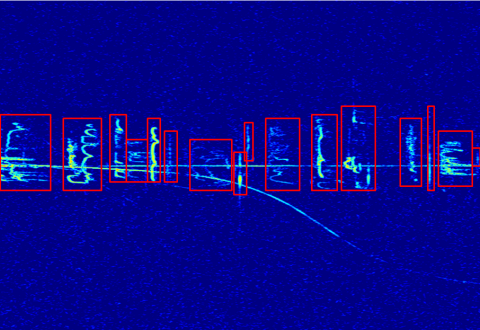A meteor (commonly known as a 'shooting star') is the luminous phenomenon resulting from the interaction of a meteoroid with the Earth's atmosphere. The meteoroids can be detected and examined visually, but also by radio observations.
Receiver picks up reflected radio wave
The principle of detecting radio meteors is simple: a radio beacon emits a radio wave that irradiates a relatively large part of the sky at 100 km altitude.
When a meteoroid dives into the atmosphere at supersonic speed, it collides with the particles of the upper atmosphere and ionizes them (one or more electrons escape). The ionized path created behind the meteor will then temporarily reflect the emitted radio wave.
The signal can then be picked up by a receiver that is tuned to the same frequency: we then speak of a 'meteor echo'.
Meteor echo contains information about trajectory, speed and mass
The duration can vary from a fraction of a second to a few seconds and depends on the size and speed of the meteoroid: the larger or faster the longer the signal lasts.
Most meteor echoes last only a fraction of a second. Analysis of the received signal gives us information about the object, such as the distance traveled, its speed or its mass. Radio observations have two advantages over visual observations:
- the observations are continuous and do not depend on the weather conditions
- they can detect objects of lesser mass: they do not produce a luminous phenomenon but are the most common.



